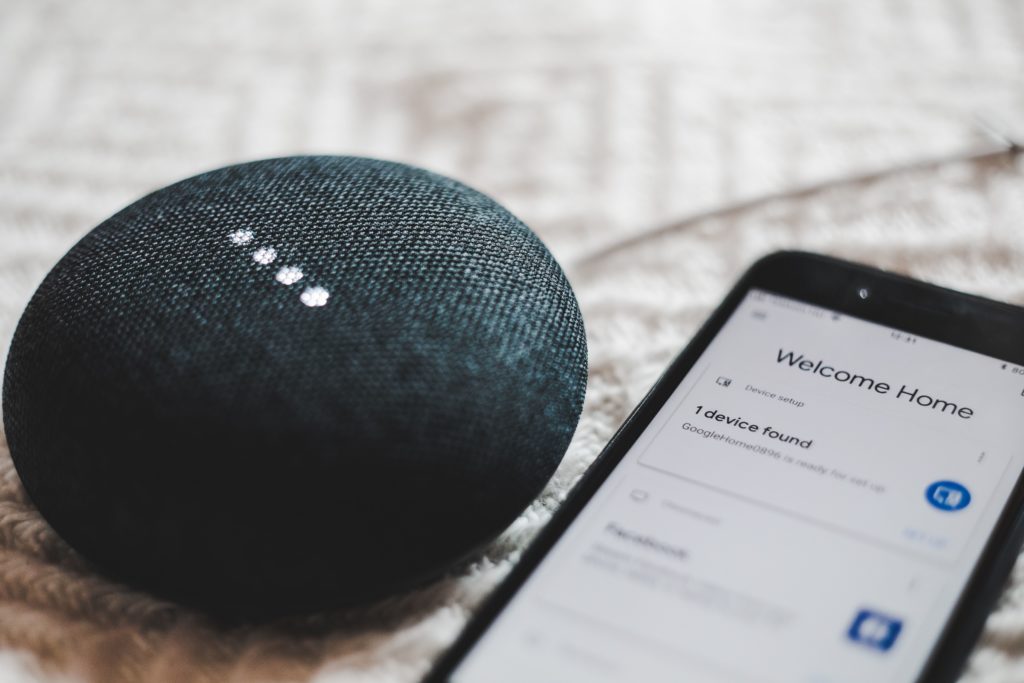Content Strategy
The Voice Search Revolution Is Here: How You Need to Adapt Your Content
By Lauren Tyler on September 26, 2019
"Alexa, turn on my bedroom lights . . . and play my top hits playlist. And, while we're at it, order me a large cheese pizza from the nearest Dominos."
"Okay," the familiar voice responded, fulfilling my requests without missing a beat.
Over the last six months, I've come to rely on voice search technology to do my shopping, order food, check the weather, research new products, track incoming packages, and even control my apartment temperature—and I'm far from the only one.
In researching trends in voice-activated speaker use, NPR and Edison Research report that approximately 65 million Americans own smart speakers today. And this userbase is only expected to grow: Thirty percent of all searches will be done without a screen by 2020, according to Gartner research, shared by Forbes.
Whether your audience uses a Google Home, Apple's Siri, Microsoft's Cortana, or Amazon's Alexa (like me), content marketers will need to keep pace with the shifts and developments in voice search in order to take full advantage of its opportunities and stay one step ahead of other brands.
How Voice Search and Traditional Text Search Differ
First things first, you'll need to understand the characteristics of voice-driven search and what differentiates it from traditional text search. In content marketing, specifically, you'll need to understand how consumers are using this search method and how it can affect your SEO rankings.
Searches over voice tend to differ from traditional text queries in that they're:
- Much longer in length
- More conversational in tone
- Posed as questions or commands
Put simply, the way we speak is very different from the way we write. If you need a haircut and want to find a salon, you'll likely type "hair salons near me" when using traditional text search. If you use your Alexa for the same purpose, you'll probably ask something like, "Where can I get a haircut nearby?"
Because voice searches are structured so differently, you'll need to adjust your SEO keyword strategy accordingly in order to reach your audience.

Photo attribution: Andres Urena on Unsplash
How to Optimize Your Content for Voice
SEO remains pivotal to the success of marketing efforts—and voice content is no exception. Failing to optimize and update your content here can hurt your brand just like forgoing these efforts on social.
These voice optimization tips can help you avoid ranking slumps and dismal ROIs that'll only upset your key stakeholders.
1. Embrace Long-Tail Keywords and Natural Language
Because we tend to use longer phrases in our natural speech, voice-optimized content makes use of long-tail keywords and conversational language. Think about it: The way you'd ask a friend for a dinner recommendation is different from the way you'd ask a traditional search engine in "computer speak."
Namely, the query would be much longer. Voice search questions are usually three to five keywords in length, if not longer, whereas the average traditional search is just two keywords long.
Using certain question-oriented phrases—such as who, what, where, when, why, how, and can—in your keywords can help get your content to more audiences. Ask the question aloud: Does it feel like something someone would actually ask? If not, it's probably not going to work for voice.
2. Use Easily Digestible Content
In addition to using natural language, you'll want to make your content as easy to understand as possible. Avoid using any business jargon or technical language, and organize your content in a clear, logical way.
Why is this so important? Because, according to a report by Backlinko, the average search result is written at a ninth-grade reading level. So, use clear and direct language to optimize your voice content.
Keep this in mind with formatting, too. Steer clear of complex data tables or long lists of links, and simplify your site navigation.
3. Ensure Your Site Is Mobile-Friendly
If your website isn't mobile-friendly, it's high time to make some adjustments. Mobile is the primary source for voice-driven search. With mobile devices, voice can offer helpful responses when your hands are otherwise busy, like when you need directions while driving.
Using a tool to test your site for mobile optimization can be helpful, but you can also determine if it's a mobile-friendly experience by asking these questions:
- Does it make good use of white space?
- Is it using short, concise paragraphs?
- Does it break up content with subheads, bullet points, and numbered lists?
- Are there any slow-loading images you should ditch?
Perhaps most importantly, remember that page speed is absolutely critical when engaging site visitors. Users expect the website and pages to load quickly, if not instantaneously. In fact, research by Google found that 53 percent of mobile website visitors will leave if a page doesn't load within just three seconds. Page speed also affects bounce rate: The slower the site, the higher the bounce rate.
Simply put, voice optimization relies on mobile optimization. The rule of thumb: If it's good for mobile, it's probably good for voice.
4. Focus on Local
Research from BrightLocal notes that 76 percent of smart-speaker owners search for local businesses on a weekly basis, with 53 percent of them using these devices daily for searches. Considering these percentages, it's essential that your content is optimized for local SEO.
Notably, voice queries typically make use of the "near me" phrase. For example, take this question: "Alexa, where can I buy a digital camera near me?" In order for any business to appear as a top result for that search, you'll want to include as much localizing information as possible.
Some ways to optimize your voice content for local include:
- Listing a phone number
- Including a physical address
- Claiming and updating any third-party listings, like those on Google Business or Yelp
- Adding "near me" in anchor text, title tags, and meta descriptions
5. Add an FAQ Page
In many ways, FAQ pages are perfect for searching via voice. They make use of question keywords and are formatted simply, with a conversational question and a short, direct answer immediately following.
Backlinko reports that 2.68 percent of all Google Home search results come straight from an FAQ page. So, research questions that your audience is likely to ask and then create content around them. Try to anticipate how specific and direct those questions might be.
If you can offer fast, concise answers to these kinds of questions, you'll not only boost your voice rankings, but also increase your chances of appearing in a Google Featured Snippet.
Brands Can't Sit Out the Voice Revolution
All things considered, voice technology is still relatively new on the scene and is constantly evolving. New recommendations will inevitably crop up as this technology matures and as more people bring voice-enabled devices into their daily lives.
Yet, at its core, voice optimization is just like other content strategies: You'll need to craft a solid SEO keyword strategy, and you'll need to think like a consumer in order to capture their attention. What provides them with the most value? What information will give them what they need?
Produce content that can quickly and easily answer those questions, and you'll be well on your way to engaging with audiences through these devices.
For more stories like this, subscribe to The Content Standard newsletter.
Featured photo by BENCE BOROS on Unsplash

